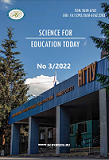Influence of developmental teaching methods on the regulation of nervous functions in children with intellectual disability and interhemispheric asymmetry of the brain
Influence of developmental teaching methods on the regulation of nervous functions in children with intellectual disability and interhemispheric asymmetry of the brain
Author(s): Tereza Yurevna AzatyanSubject(s): Educational Psychology, Health and medicine and law, Pedagogy
Published by: Новосибирский государственный педагогический университет
Keywords: Interhemispheric asymmetry; Regulation of nervous processes; Children with mental retardation; Brain structure; Brain functions; Developmental teaching; Interhemispheric interaction;
Summary/Abstract: Introduction. The degree of asymmetry in humans and the complication of mechanisms of interhemispheric interaction are formed mainly in the process of learning. However, little attention has been paid to the impact of developmental teaching methods on the regulation of nervous functions in children with intellectual disability. The aim of this article is to study the influence of developmental teaching methods on the regulation of nervous functions in children with mental development disorders and interhemispheric asymmetry of the brain. Materials and Methods. The methodological basis of this research investigation was scholarly works by a number of authors devoted to the study of nervous functions in children with mental development disorders and interhemispheric asymmetry of the brain, regulation of these functions, identifying difficulties, and modeling the system of work with these children. (Boguslavskaya, Miroshnichenko, 2019, Maryutina, Yermolaev 2001, Reuter-Lorenz and others, 2000). Results. The results of the research have shown that we have determined the level of mental development in mentally retarded children aged between 8 and 11 years caused by features of interhemispheric brain organization. We have conducted research of interhemispheric functional asymmetry and interhemispheric interaction in students studying different developmental programs, investigated dynamics of regulation of nervous functions in students aged between 8 and 11 years with impaired mental development and interhemispheric asymmetry. On the basis of the conducted research and work experience, the research findings are presented and a number of recommendations are provided. Conclusions. The results of the research emphasize the necessity of systematic assistance to children with impaired mental development and interhemispheric asymmetry of the brain in the regulation of nervous functions in conditions of developmental learning. The findings should be taken into account in organizing work with this category of children.
Journal: Science for Education Today
- Issue Year: 12/2022
- Issue No: 3
- Page Range: 116-131
- Page Count: 16
- Language: English

